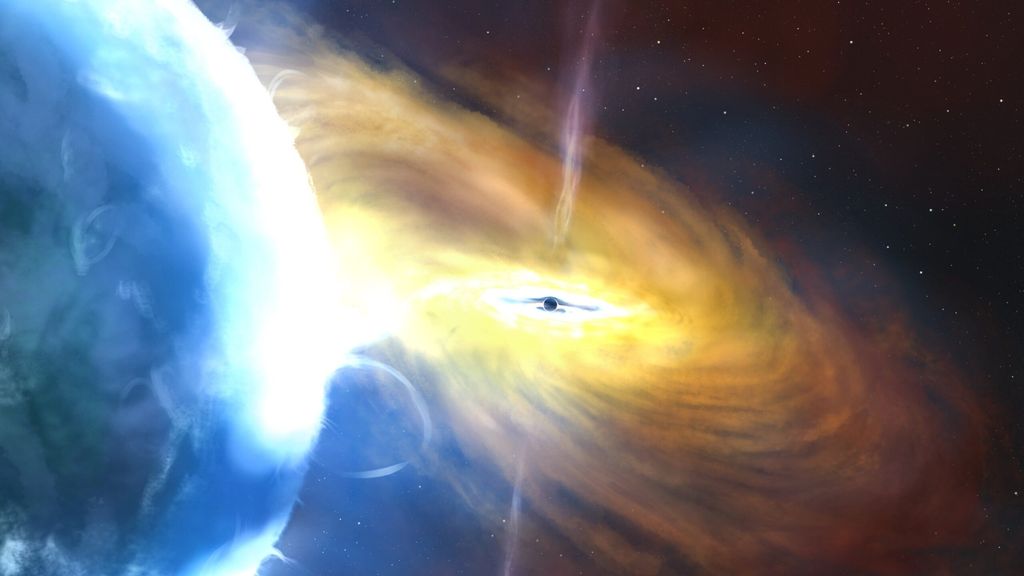NOS News•
An explosion that lasted for three years and was 10 times brighter than a supernova: astronomers have a discovery of a cosmic phenomenon which they believe is the largest jingle ever recorded in the universe.
The object, located 8 billion light-years away, was first spotted in 2020, but it was only three years later that observers fully realized the magnitude of the explosion, dubbed AT2021lwx.
The research team, led by Britain’s University of Southampton, encountered this phenomenon using a telescope that scanned the sky for objects whose brightness changes rapidly. That could refer to a supernova, an exploding star.
But AT2021lwx is not a supernova, it only lasts a few months. This massive eruption that has been going on for years is like an explosion Tidal disturbance has occurred (TDE)And Where a black hole eats a star. The monster was nicknamed “Scary Barbie” because of its size (and its second name ZTF20abbeie).
A thousand times larger than the sun
Now it appears that the cosmic explosion is larger than previously thought. It is not an ordinary TDE, as the star just enters the black hole. There are several explanations, but most likely it is not a star, but a giant gas cloud, a thousand times the size of our sun, that fell into a supermassive black hole.
Due to its size, this phenomenon is about three times brighter than normal TDE, but this brightness goes up and down. Perhaps it has to do with triggering the shock waves that are created when pieces of the gas cloud are gobbled up. They encounter an incoming gas and a huge disk of dust surrounding the black hole, which looks like a spinning donut. This releases electromagnetic radiation.
The AT2021lwx isn’t the brightest explosion yet. This is in the name of a ten-hour gamma-ray flash detected in 2022.
The blast is now being examined by a full array of telescopes, on Earth and in space. The team, led by the University of Southampton, will look for the blast at different wavelengths in the near future. For example, more needs to become clear about the temperature of explosive gas clouds and the processes behind them. In addition, astronomers will use computer simulations to check whether their theory is correct.
“As new research facilities become available in the coming years, we hope to learn more,” the team wrote. “These phenomena, although very rare, can be so powerful that they play a major role in the gradual changes in the cores of galaxies.”







